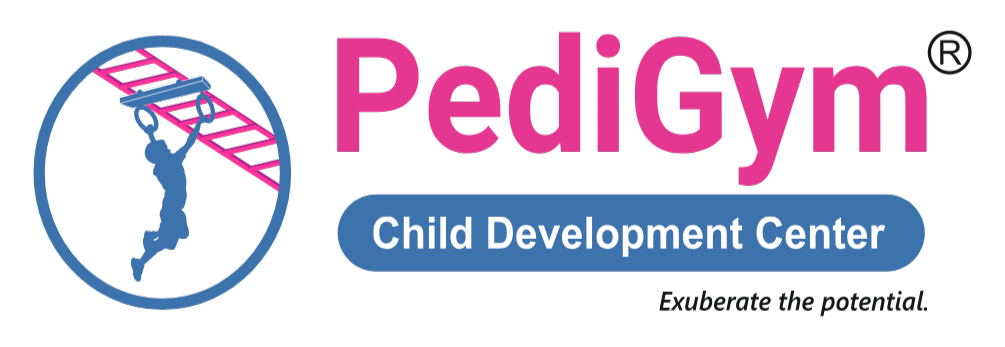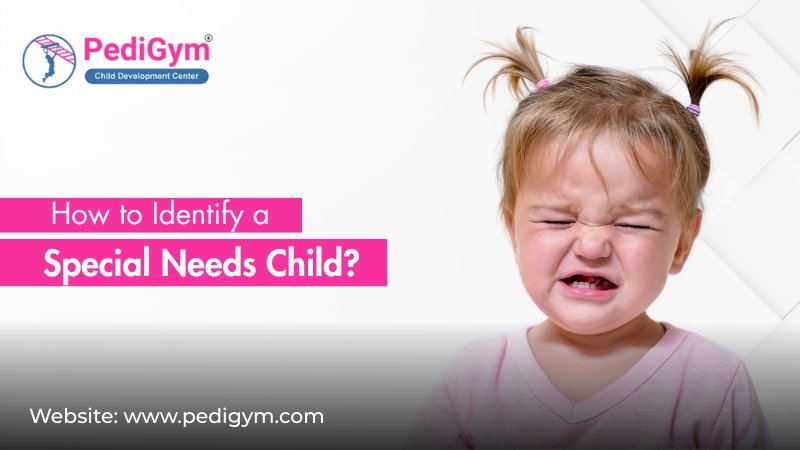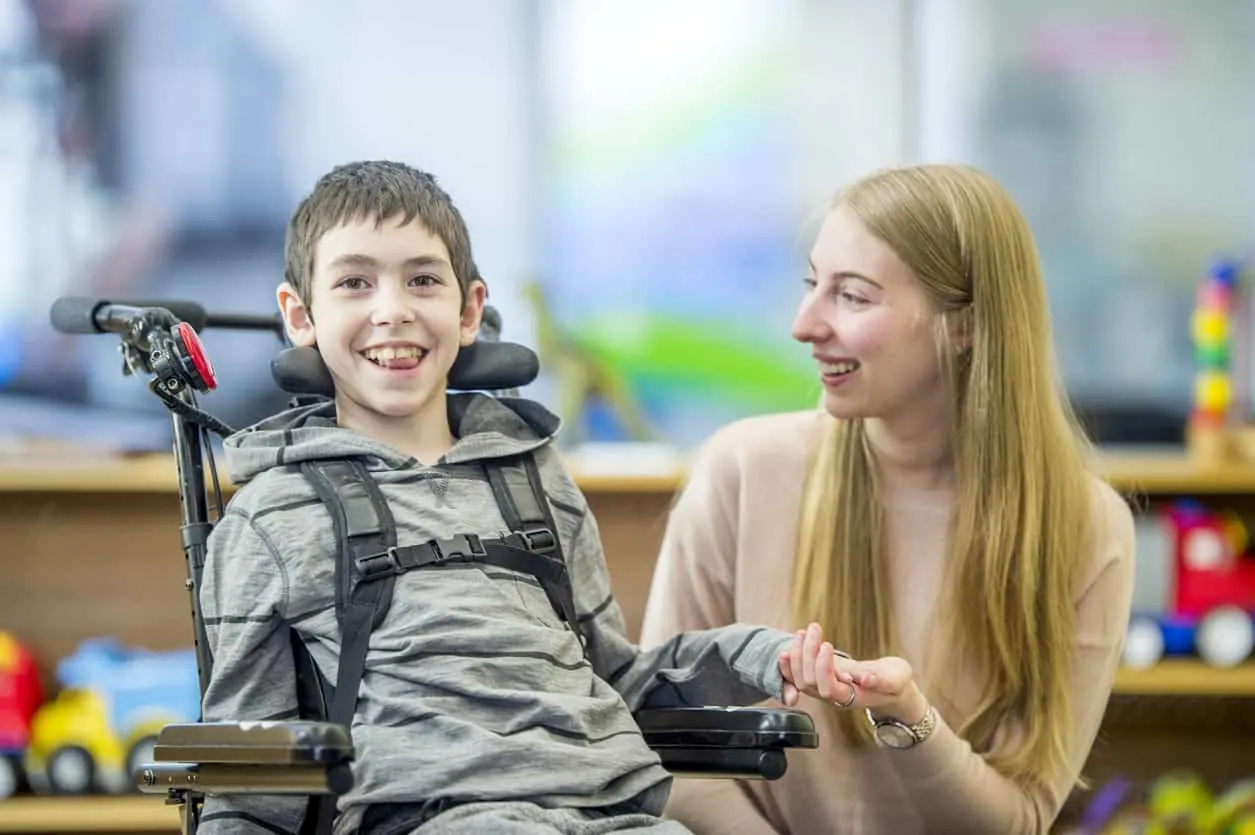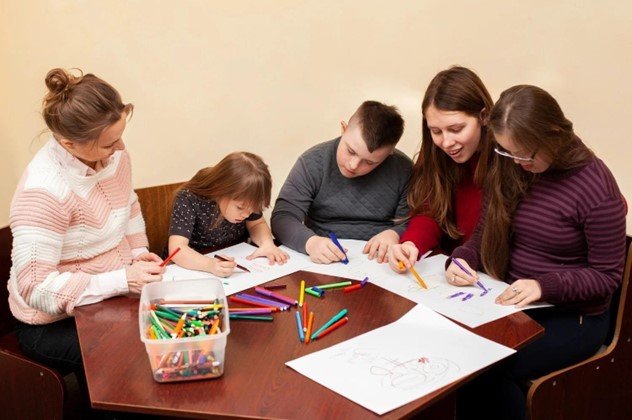Every child is unique in their own way, but some children may need a little extra support to reach their full potential. Identifying a special needs child early is the first and most important step in providing them with the right care, guidance, and educational support. A special needs child may have challenges in learning, communication, behavior, physical ability, or emotional development that require specialized attention and tailored learning approaches.
Understanding the definition of a special needs child helps parents and educators recognize when a child might need additional help. While it’s true that every child is special, recognizing the signs of developmental delays or behavioral differences ensures that no child is left behind. With the right awareness, early intervention, and collaboration with professionals such as therapists, psychologists, and educators, we can help these children thrive and lead fulfilling lives.
What Are Special Needs Children?
Before we discuss identification, it’s important to understand the definition of special needs child. A special needs child is one who requires extra support—emotionally, physically, mentally, or developmentally—to thrive in daily life or education. These children may face challenges in areas such as speech, learning, behavior, mobility, or social interaction. Simply put, a special child may have difficulties that make certain aspects of growth or learning harder, but with the right help, they can achieve incredible progress.
At Pedigym, we believe that every child is special, and having special needs doesn’t define a child’s potential—it just means they need a different kind of care and understanding.
Identify the Different Types of Children with Special Needs
Children with special needs may fall into various categories depending on the type of challenges they experience. Each child’s needs are unique — and identifying these early can help parents seek timely medical, emotional, and educational support. Early understanding also allows caregivers to create a nurturing environment that encourages learning and confidence.
Below are the main types of special needs in children and how parents can recognize them:
1. Physical Disabilities
Children with physical disabilities may have difficulties in movement, muscle control, or body coordination. These challenges often arise from conditions that affect the bones, muscles, or nervous system.
Common examples include:
- Cerebral Palsy (CP): Affects muscle tone, posture, and movement. Some children may use wheelchairs or braces for mobility.
- Spina Bifida: A birth defect where the spinal cord doesn’t develop properly, leading to mobility or bladder control issues.
- Muscular Dystrophy: Causes muscle weakness and loss of motor abilities over time.
Early signs to notice: delayed crawling or walking, stiffness or floppy movements, or difficulty using limbs equally. With physiotherapy, occupational therapy, and assistive devices, these children can gain independence and improve their quality of life.
2. Developmental Disorders
Developmental disorders affect how a child learns, behaves, and interacts with others. These are typically diagnosed in early childhood and can vary widely in severity.
Common developmental conditions include:
- Autism Spectrum Disorder (ASD): Characterized by difficulties in social communication, restricted interests, and repetitive behaviors.
- Down Syndrome: Caused by an extra chromosome, leading to intellectual disability and distinct physical features.
- Intellectual Disability: General delays in reasoning, learning, and problem-solving abilities.
Possible indicators: delayed speech, poor eye contact, lack of response to name, or difficulty understanding instructions. Early diagnosis and therapies such as behavioral therapy, speech therapy, and structured education programs can help children build social, emotional, and communication skills effectively.
3. Learning Disabilities
Learning disabilities affect how a child understands or uses spoken and written language, numbers, and symbols. These children usually have normal or above-average intelligence but face difficulties in specific academic areas.
Examples of learning disabilities include:
- Dyslexia: Difficulty reading, spelling, and recognizing words.
- Dysgraphia: Trouble with writing, letter formation, and organizing thoughts on paper.
- Dyscalculia: Difficulty understanding numbers, mathematical concepts, or basic calculations.
Early signs: trouble recognizing letters or numbers, frequent reversal of letters (“b” and “d”), difficulty remembering sequences, or frustration during schoolwork. With special education support, individualized learning plans, and one-on-one guidance, children with learning disabilities can succeed academically and develop lifelong confidence.
4. Sensory Impairments
Sensory impairments refer to difficulties with one or more of the senses — most commonly hearing or vision. These challenges can impact communication, socialization, and classroom participation.
Types of sensory impairments:
- Hearing Impairment: May range from mild hearing loss to total deafness.
- Visual Impairment: Includes partial sight or total blindness.
- Sensory Processing Disorder (SPD): Difficulty processing sensory information like sounds, textures, or lights.
What parents might notice: a child doesn’t respond to sounds, bumps into things frequently, avoids certain textures, or becomes overwhelmed by noise or touch. Assistive technologies like hearing aids, visual aids, Braille education, and sensory integration therapy can significantly improve their participation and independence.
5. Behavioral and Emotional Disorders
Behavioral and emotional disorders affect how a child regulates emotions, interacts with others, and responds to rules or situations. These conditions may cause persistent issues in attention, mood, or conduct.
Common examples include:
- Attention Deficit Hyperactivity Disorder (ADHD): Characterized by inattention, impulsivity, and hyperactivity.
- Oppositional Defiant Disorder (ODD): Persistent patterns of anger, defiance, or argumentative behavior.
- Anxiety or Depression: Emotional distress that affects school performance and social life.
Warning signs: difficulty sitting still, frequent tantrums, aggression, extreme shyness, or avoidance of social activities. With early counseling, behavior therapy, parent training, and emotional support, these children can learn self-control, improve relationships, and build positive coping skills.
Why Early Identification Matters
Identifying the type of special needs early enables timely intervention, personalized learning, and emotional development. Whether it’s therapy, special education, or environmental support, early action allows children to reach their fullest potential — reminding us once again that every child is special, just in their own way.
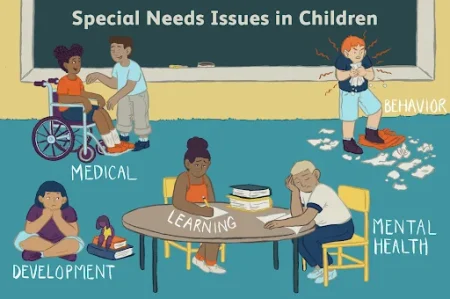
Characteristics of Children with Special Needs
Recognizing signs early is the first step toward helping your child. Here are some common characteristics of special needs children:
- Delayed speech or communication – limited vocabulary, difficulty expressing needs, or not responding to their name.
- Social challenges – prefers to play alone, avoids eye contact, or struggles to make friends.
- Motor skill delays – difficulty with balance, running, writing, or holding small objects.
- Learning difficulties – trouble understanding simple instructions or remembering hings.
- Sensory sensitivities – overreacts to lights, sounds, or touch.
- Emotional differences – frequent meltdowns, anxiety, or trouble adapting to change.
It’s essential to remember that every child is special, and these characteristics do not define their worth or potential. They simply indicate that the child may benefit from extra attention, assessment, or therapy.
The Professionals Who Can Help to Deal with Individuals with Special Needs
If you notice any of these characteristics, the next step is seeking professional guidance. Multiple experts work together to assess and support children with special needs.
1. Pediatrician
A pediatrician is usually the first point of contact. They perform initial screenings, identify developmental delays, and refer you to specialists.
2. Developmental Pediatrician
They specialize in diagnosing and managing developmental, learning, and behavioral issues in children.
3. Child Psychologist or Psychiatrist
These professionals evaluate cognitive, emotional, and behavioral patterns and help design therapy or behavior management plans.
4. Speech and Language Therapist
For children who have trouble communicating, speech therapists improve understanding, vocabulary, and expression.
5. Occupational Therapist
They help children develop fine motor skills, sensory regulation, and daily life independence.
6. Special Educator
Special education is a customized learning approach that adapts teaching methods, environments, and materials to match a child’s individual needs. A special educator ensures the child receives learning in a way that fits their pace and style.
7. Physiotherapist
For children with movement or balance issues, physiotherapists design exercises to improve strength, posture, and coordination.
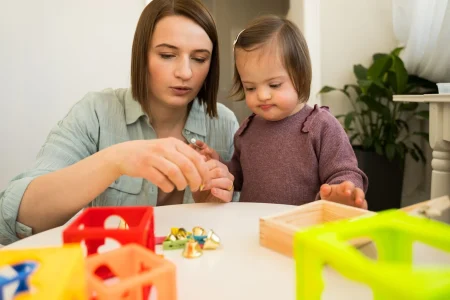
How to Deal with Special Needs Child?
As a parent or caregiver, knowing how to deal with special needs child is essential for emotional and developmental growth. Here’s what helps most:
- Be patient and positive. Focus on progress, not perfection.
- Create a structured routine. Predictability helps reduce anxiety.
- Communicate clearly. Use short, simple instructions or visual aids.
- Encourage independence. Let them try tasks on their own, even if it takes longer.
- Work with professionals. Regular therapy and consistent follow-ups matter.
- Celebrate every achievement. Every small milestone deserves recognition.
Remember, the goal is not to “fix” your child but to help them reach their full potential — because every child is special in their own unique way.
Final Thoughts
Understanding who is special child and learning how to support them through early intervention and special education can transform their journey. At Pedigym, our therapists and educators work together to guide families, offering personalized programs to help every child thrive — emotionally, socially, and academically.
If you suspect your child may have special needs, don’t wait. Reach out to a pediatrician or a child development center in Faridabad like Pedigym, where expert care and early support can make all the difference.
